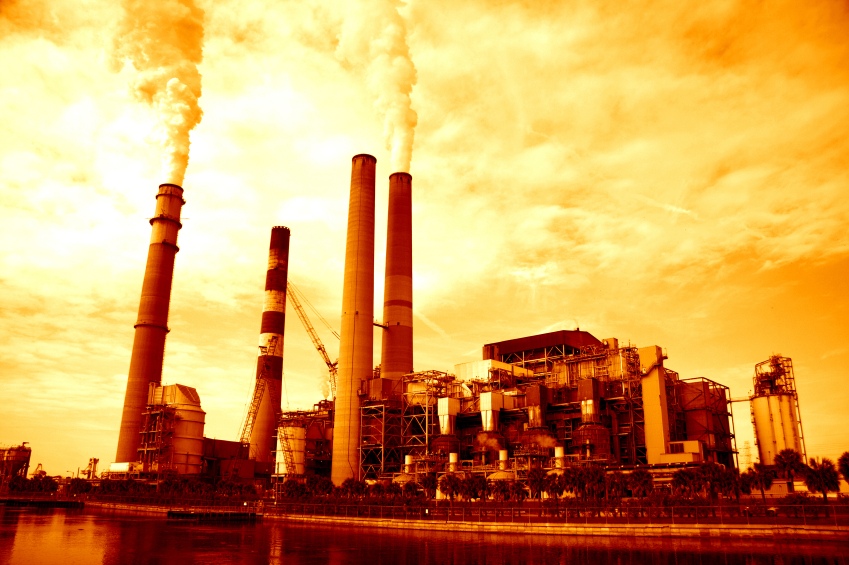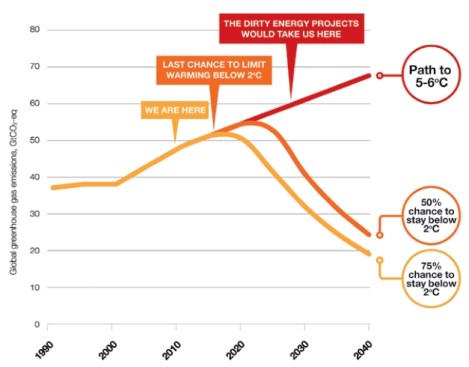In a justly famous Rolling Stone piece, Bill McKibben popularized the notion of “Global Warming’s Terrifying New Math.” We have a “carbon budget,” between now and 2050, of roughly 565 gigatons of carbon dioxide. If we emit more than that we are likely to exceed the 2 degree C target agreed to in the Copenhagen Accord. (As Thomas Lovejoy notes in clear-eyed and essential piece in The New York Times yesterday, “2 degrees seems nightmarish as it is.”)
According to the Carbon Tracker Initiative, the amount of CO2 represented by the world’s proven fossil fuel reserves is 2,795 gigatons. Here’s the problem, in math terms:
2,795 > 565
If we want a reasonable hope of hitting our 2 degree target, we have to leave about 80 percent of the known fossil fuels in the ground.
That is indeed terrifying math, but it may become slightly less so as it becomes more specific and concrete. (It is always helpful to break a large task into component parts.) Toward that end, today saw some fascinating new work from the research consultancy Ecofys. Commissioned by Greenpeace, it attempts to rank the most dangerous fossil-fuel projects currently being planned.
The metric is simple: how many additional tons of CO2 the project will emit by 2020. (See the report for more on methodology.) Here’s how they rank:
- China’s Western provinces / Coal mining expansion / 1,400
- Australia / Coal export expansion / 760
- Arctic / Drilling for oil and gas / 520
- Indonesia / Coal export expansion / 460
- United States / Coal export expansion / 420
- Canada / Tar sands oil / 420
- Iraq / Oil drilling / 420
- Gulf of Mexico / Deepwater oil drilling / 350
- Brazil / Deepwater oil drilling (pre-salt) / 330
- Kazakhstan / Oil drilling / 290
- United States / Shale gas / 280
- Africa / Gas drilling / 260
- Caspian Sea / Gas drilling / 240
- Venezuela / Tar sands oil / 190
There’s a lot to mull over in this list. Here are a few things that jump out:
• Collectively, these projects would raise global CO2 emissions by 20 percent over and above what current projects are emitting. Another way of putting this is, they would eat up somewhere between 20 and 33 percent of our total carbon budget out to 2050. Just these new projects. By 2020. Yikes.
Greenpeace makes it simple:
• Coal is the problem. Four of the top six polluters are projects bringing new coal out of the ground.
The lion’s share of the new emissions from the 14 dirty energy projects would come from the expansion of coal mining and burning. Coal burned to produce electricity already pumps more CO2 into the atmosphere than any other source of conventional power. Coal-fired power plants are responsible for three-quarters of “locked in” emissions in the power sector. By 2020, the dirty projects would extract an additional 1,400 million tonnes of coal, enough to fuel 550 large coal-fired power stations. The growth in coal use is the sole reason CO2 emissions grew at record rates over the past two years. Coal burning also produces pollutants and toxic emissions that cause hundreds of thousands of deaths a year.
According to the International Energy Agency, coal will surpass oil as the world’s top fuel within the decade. That is not good news. Coal is the enemy of the human race.
• Of the top five projects, only one is within U.S. borders: Pacific Northwest coal export. It’s almost like fighting those proposed coal export facilities is a really big deal. (By the way, if you think putting a huge coal export terminal in Bellingham, Wash., is a bad idea, you can say so here.)
• The estimate for shale gas (fracking) in the U.S. may be low. The report estimates a methane leakage rate of 3.9 percent. A recent NOAA study put it at almost 9 percent. If the higher-end estimates are proven out by further research — and much research remains to be done — then fracking could look a lot more dangerous than it currently does.
• Drilling in the Arctic is a horrible idea. But we already knew that.
And finally, a broader and perhaps more optimistic thought: Lots of these projects are stoppable. It may not seem like it, but they are. Human beings are making these decisions and human beings are subject to social, political, and economic pressure. It is possible for passionate groups of citizens to create that pressure. It’s happened before!




